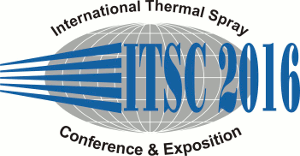
|
4651 |
|
Influence of segmentation crack on the stress distribution and failure behavior of thick thermal barrier coatings (TTBCs) fabricated by atmospheric plasma spraying: A numerical simulation study |
|
Liang Wang* / Shanghai Institute of Ceramics, Chinese Academy of Sciences, China Jiasheng Yang / Shanghai Institute of Ceramics, Chinese Academy of Sciences, Shanghai Dachuan Li/ Shanghai Institute of Ceramics, Chinese Academy of Sciences, Shanghai Shunyan Tao/ Shanghai Institute of Ceramics, Chinese Academy of Sciences, China |
|
In this paper, the influence of segmentation crack on the stress distribution and failure behavior of thick thermal barrier coatings fabricated by atmospheric plasma spraying (APS-TTBCs) has been investigated via finite element modeling. The density and length of segmentation cracks have been specially focused on. The investigation results indicate that the existence of the segmentation crack is not beneficial to improve thermal insulation effect of the TTBCs. But to control the appropriate segmentation crack density will be beneficial to improve thermal shock resistance of TTBCs, and the segmentation crack length also affect residual stress of the crack tip. The stress intensity factor and energy release rate (J integration) will increase with the increasing of segmentation crack length. The existence of segmentation crack will improve strain tolerance of TTBCs. The strain tolerance has been characterized by segmentation crack density and segmentation crack length quantitatively. The simulation results have been further verified via experimental methods. It has been found that the as-sprayed TTBCs exhibited superior thermal shock resistance when the segmentation crack density is about 4mm-1. The failure mechanism of APS-TTBCs can be attributed to the propagation of segmentation crack and formation of the horizontal crack at the bond-coat/top-coat interface. |